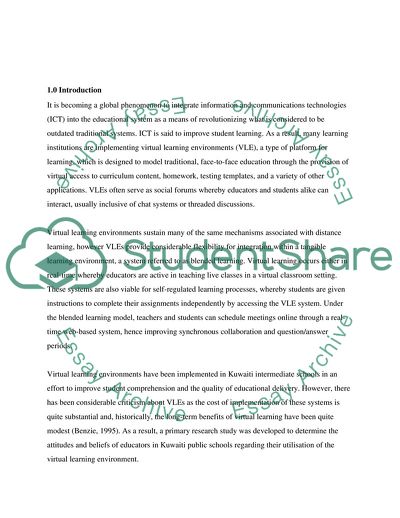Cite this document
(Virtual Learning Environment: Teachers Attitudes and Perspectives Research Paper Example | Topics and Well Written Essays - 4000 words, n.d.)
Virtual Learning Environment: Teachers Attitudes and Perspectives Research Paper Example | Topics and Well Written Essays - 4000 words. https://studentshare.org/education/1818321-elt-teachers-attitude-towards-virtual-learning-environment
Virtual Learning Environment: Teachers Attitudes and Perspectives Research Paper Example | Topics and Well Written Essays - 4000 words. https://studentshare.org/education/1818321-elt-teachers-attitude-towards-virtual-learning-environment
(Virtual Learning Environment: Teachers Attitudes and Perspectives Research Paper Example | Topics and Well Written Essays - 4000 Words)
Virtual Learning Environment: Teachers Attitudes and Perspectives Research Paper Example | Topics and Well Written Essays - 4000 Words. https://studentshare.org/education/1818321-elt-teachers-attitude-towards-virtual-learning-environment.
Virtual Learning Environment: Teachers Attitudes and Perspectives Research Paper Example | Topics and Well Written Essays - 4000 Words. https://studentshare.org/education/1818321-elt-teachers-attitude-towards-virtual-learning-environment.
“Virtual Learning Environment: Teachers Attitudes and Perspectives Research Paper Example | Topics and Well Written Essays - 4000 Words”. https://studentshare.org/education/1818321-elt-teachers-attitude-towards-virtual-learning-environment.


